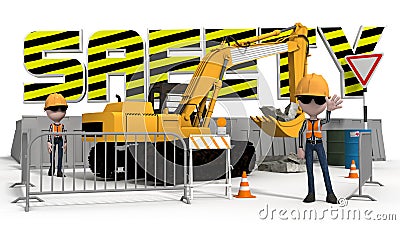
Jakarta, Indonesia - The responsibility of operators does not end nor begin only in the construction site. Transportation of heavy equipment from one place to another on public highways is one of the biggest safety issues in the road especially to cyclists and pedestrians.
Axis Capital Group, a company which sells and rents capital equipment from Singapore, has reported more 12 injuries and accidents in the last 16 years of operation. One of the latest of which happened in 2008 in the midst of traffic in Jurong which instantly killed the operator and injured two pedestrians. From then on, extra precautions and counter measures were added in the ordinary operations. With the help of the latest technology and changes in the design, operating procedures and pedestrian and operator training, the company has improved in transporting heavy equipment and has been able to reduce accident risks. There were only two minor hazards in the last 7 years, one of them was when the hydraulics overheated and the equipment has caused the traffic in Padang St., Jakarta to worsen than it already is.
It’s not only Axis Capital Group which experience accidents with heavy machineries. Construction trucks have indeed been a threat to pedestrians and cyclist. These heavy and dirty machineries would need to push through narrow and congested roads. Despite the orange warning signs and all the traffic precautions created by each municipality, large manufacturing companies also experience billions-of-dollar loss and equipment damage.
To lessen the risk, large manufacturing companies have created different designs and operating systems. Mercedes-Benz, for example has launched a whole new generation of Econic vehicles capable of higher payloads, which improve the driver’s ability to spot vulnerable road users such as cyclists and pedestrians. Vehicles already in operation include a tipper, mixer, skip loader and curtain-sider (SIG).
The Econic provides the operator a wider range of vision with a deep panoramic widescreen. It may take a lot of training to get used to the odd screen but for safety, operators are trained for a few weeks mastering the dependency on the screen through simulation program before they can fully take over the real thing.
Operators are also equipped with communication devices which could patrol their company of an impending accident which has been developed through the use of telematics. They should also be provided with communication gadgets to be used to immediately warn highway patrols if ever a major or minor emergency occurs. Protocol also requires them to be informed of any road blocks or traffic updates provided for by the local highway unit.

















